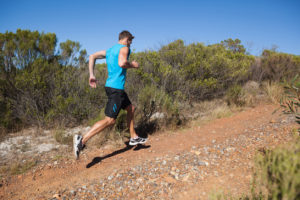What’s the best way to dispose of 8 stinking tonnes of rotting whale carcass?
I’ve no idea either.
But I know it’s not the way that Oregon’s highway division decided to do it.
Back in November 1970 they had a 15m long, 8-tonne humpback whale wash up on a beach.
And nobody could think of the best way to deal with it.
Bury it on the beach?
Nope, it’ll eventually resurface.
Chop it up?
They couldn’t get any volunteers.
Blow it up?
Yeah, let’s blow it up.
I mean, I get it, it’d be quick and easy.
Plus, who doesn’t like an excuse to play with dynamite?
And that’s what they did.
They planted a metric shit tonne of TNT around the carcass and blew it up thinking it’d all go out to sea.
Wrong.
They ended up with 8-tonnes of putrifying whale flesh raining down across half a mile of beach…
And the film crew who were there to report on it for the evening news.
And the “let’s blow it up” approach is what a lot of people do with their training.
Goong for the big bang approach with Metcons everyday…
HIIT as their only conditioning…
And maxing out the big lifts every session.
It makes sense in some ways, less time commitment…
No getting bored cruising through an easy zone 2 cardio sessions…
Max singles are cool.
But as the video shows, it’s doesn’t always work out well.
Now, none of these approaches are gonna leave you covered with rotting whale guts…
But you don’t need to knock your pan in every session to make progress.
If you limit the “blow the whale up” approach for a couple of sessions a week you’ll do way better.
Filling in the other days with easier sessions.
Ones that allow you to work on other aspects of your fitness…
Like zone 2 conditioning or lighter hypertrophy work in the gym.
Both of which support the big sexy max effort sessions.
They might be the kind of sessions that don’t get like when you post them on the ‘gram but they are the cornerstones of your success.
Limit going crazy to a couple of times a week and in 6 months time you’ll be emailing me about the mad PBs you’ve been setting.
I nearly forgot. Here’s the video
https://youtu.be/V6CLumsir34





